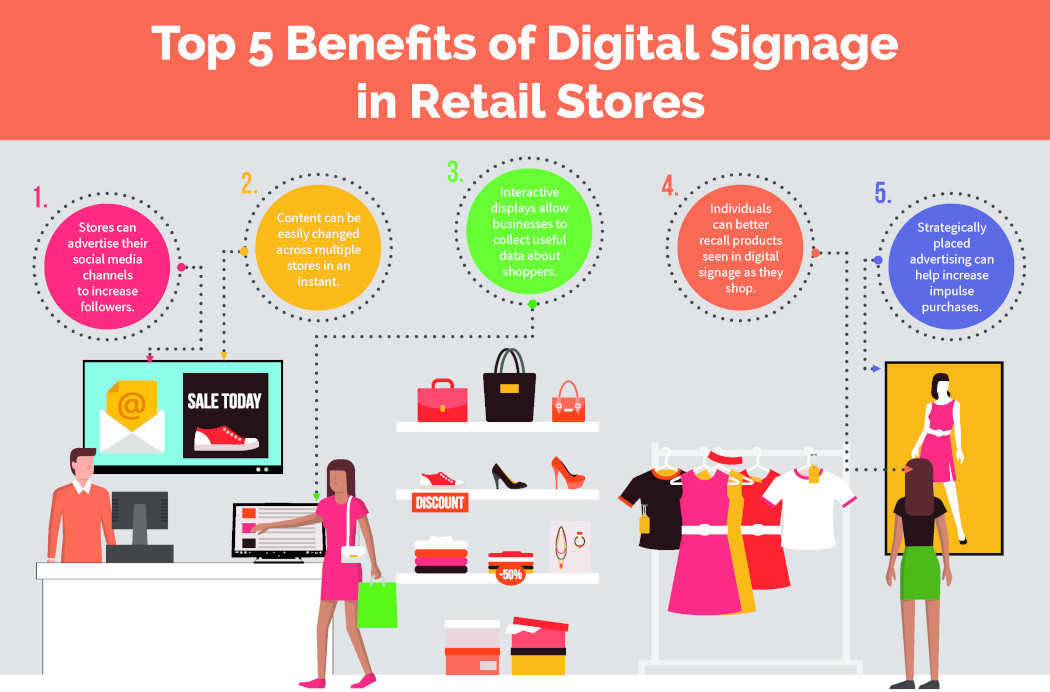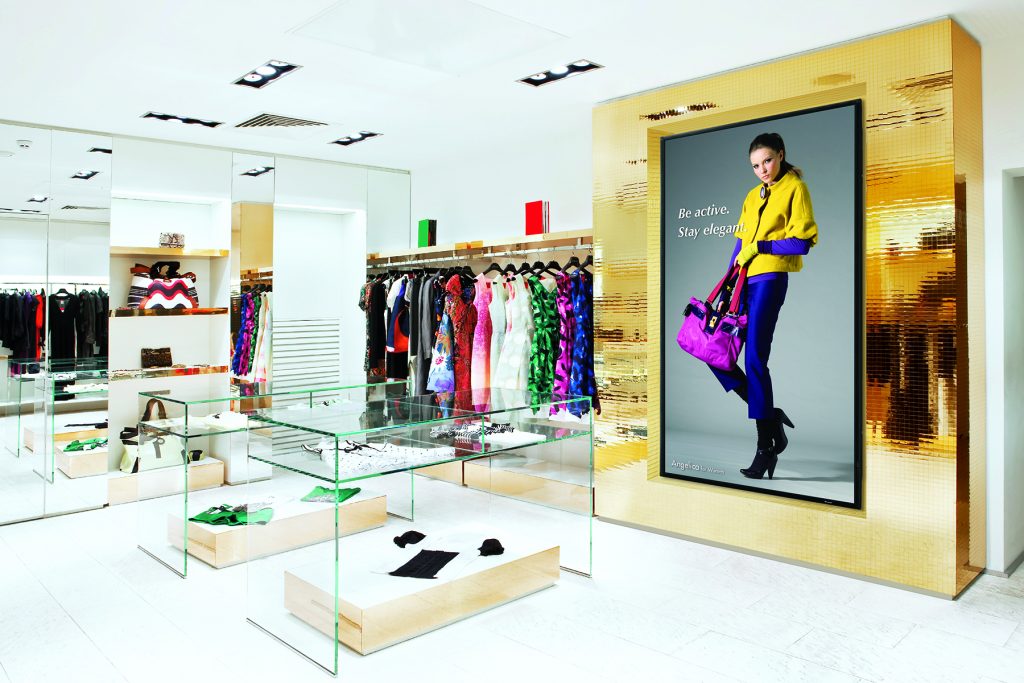From Amazon’s self-checkout store to IKEA’s augmented reality (AR) app, the technology revolution is well on its way in retail stores everywhere. Brick-and-mortar stores continue to struggle against the increasing ubiquity of buying online. Online shopping’s prevalence has led to several challenging questions being asked, including how physical store locations can demonstrate that they are ahead of the game from a technological standpoint, as well as how they are listening to—and being responsive to—their stakeholders’ needs and concerns. Against this backdrop, digital signage, which allows businesses to powerfully deliver relevant content to their audiences, has never been more important than it is today. Not only does digital signage have the ability effectively to communicate data through images, audio and video, but it is also helping transform the retail space and playing a crucial part in the smart cities of the future.
 Retail stores, in particular, can see a formidable return on their investment when they use digital signage. Although there are several reasons to implement digital signage in retail locations, the most compelling five benefits in the context of retail are as follows:
Retail stores, in particular, can see a formidable return on their investment when they use digital signage. Although there are several reasons to implement digital signage in retail locations, the most compelling five benefits in the context of retail are as follows:
- Stores can advertise their social media channels to increase followers. Social media is an easy way to get free advertising from shoppers. When shoppers follow a preferred retail store, they tend to compliment its products and post photos of themselves using its goods and enjoying its services. If a retail store chooses to mount digital signage, social media feeds—Instagram, Twitter, Facebook and others—can be displayed to make shoppers aware of the store’s social media presence. Social media can also influence purchases by showing product images that feature real people, rather than models, and that include positive feedback.
- Content can be changed easily and instantly across multiple stores. Before digital signage, ordering promotional signs in retail stores was a time-consuming process. They had to be designed, printed, shipped to the stores and then hung up in strategic areas. Today, the flat-panel, high-resolution displays are already in place, and changes can be made easily on a laptop computer, tablet or smartphone and uploaded instantly. For store chains that are located in various regions, content can be customized for specific stores through user-friendly software. And, aside from being a time saver, digital signage is generally a greener method.
- Interactive displays allow businesses to collect useful data about shoppers. Consumers can now shop online 24/7 and see every product a brand has to offer. As a result, retailers have to mimic that experience by adding interactive displays in their brick-and-mortar locations. For example, interactive displays in a clothing store could allow a consumer to see how he or she would look in a different color or style of outfit. The interactive display could then collect the information, along with data from other shoppers, to figure out the most popular choices. The store could also analyze a shopper’s social media data to find out more of what interests him or her, and then use that information to make customer-influence-based adjustments to product lines.
- Individuals can better recall products seen in digital signage as they shop. Digital signage can leave quite an impression on a consumer. According to Visix, a software-development firm, 70 percent of Americans say they have seen a digital display in the past month, and 52 percent say they’ve seen a digital sign in the past week. The reason digital signage has such a successful recall rate is that people respond better to visual messages. In fact, 90 percent of the information transmitted to the brain is visual, and it has been said human brains process visual information 60,000 times faster than text.
- Strategically placed advertising can help increase impulse purchases. Bright colors on digital displays can keep shoppers engaged, but strategic placement adds that extra element to influence impulse purchases. Digital signage near a retail store’s entrance, for example, can advertise store credit cards that will confer discounts, ultimately leading to more purchases. Placing digital signage next to products that are on sale can help move those items off the shelves, as well.
Whether a retail store sells clothing, furniture, groceries or other items, implementing digital signage can be greatly beneficial.
